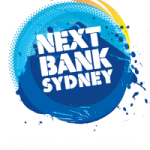The conference opened with the MC recounting the story of the Bank of America who in the early 1980’s was convinced that desktop computers were a passing fad and chose not to invest in them for his staff. As a result BofA lost their position as market leaders in the US.
The first speaker was
Jayne Opperman, General Manager Technology Retail, Commercial & Wealth, ANZ who covered “
What is the impact of emerging technologies and what is involved in adopting an operating model and locking in an improved technology roadmap for super banks?“
Jayne called out that whilst there are a number of trends out there most Banking analysts agree that there are three key trends at present:
- Mobile banking
- Social business for banking
- Analytics
Mobile – there are 530 million people banking on their phones according to Juniper research. Consumer demand is driving the investment in this area as mobile penetration increases globally and phones become cheaper and more feature rich.
Life 360 was called out as an example of an application that is providing real value for families whilst exploiting the power of the technology. The biggest challenge in enabling mobile services is the back end integration – this is being overcome as more banks upgrade their systems. Jayne stated that the only way to maximize customer satisfaction is to provide a great cross channel experience.
Social – the value proposition here covers a number of areas however the most interesting is the female appeal. Women are more likely to be frequent users of social technologies and research indicates that more household budgets are being managed by females.
Analytics – there is still a need to look at existing data sources in addition to the newer types made usable by big data technologies. Overall though there is a need to perform quicker analysis and put more insights into the hands of people who can use it.
A fundamental capability that supports all three of these is that of business process – we need to first remove breakpoints and standardize wherever possible. In summary Banks need to understand how to drive simplicity and innovation in order to create convenient, easy and empowering customer experience.
Greg Wood, Marketing Director, South Asia, SAS talked about “
High performance analytics for financial services“
Greg started by describing SAS using four numbers:
- 2.72 (Apologies, I didn’t catch what this represented!)
- 24% how much of their revenue they invest in research
- 55,000 number of active sites globally
- 129 number of countries SAS operates in
An IDC survey of CIO/CTO in February 2011 reported that analytics is the most important factor in creating competitive advantage in business. The question is whether this changed in 2012?
The thinking is that we can use technology to scale decision making – a human mind is not capable of taking millions of inputs and analysing them in the same way that a computer can.
The
OODA loop concept was developed by a WWII fighter pilot as a way to survive a dog fight however it also perfectly describes the benefit of analytics. The key process is as follows:
- Observe what is going on around you
- Orient yourself in the right direction
- Decide what course of action to take
- Act
If you are able to determine what to do before your opponent then this is a major competitive advantage.
Big data typically has 3 V’s associated with it:
However we rarely hear about value – what is the data that matters the most? This is a much more difficult V to determine and without it we have information overload.
A question that I have is that with the price of storage and hardware to mine it becoming ever cheaper does it matter how low the value of the data is if we can glean insight from it?
In order to mine effectively an organization needs to have an analytics data warehouse rather than the enterprise data warehouses that are likely in place. This enables transient analytics and test and learn which is essential for big data to become useful. Analysts need a sandpit to play in. The value of high performance analytics is speed. It’s necessary to do everything in real time as all systems are heading that way, you need the analytics at the same velocity to support what we do today. An example of this is in calculating the risk for trading – currently it takes 14 hours to run calculations with existing models. This doesn’t allow for any re-running of the models if inputs change and can leave companies blind when trading. With high performance analytics this could be reduced to 8 minutes – significantly reducing the level of risk.
Another example is that of
Catalina Marketing a US based company that produces the equivalent of shop-a-dockets. They moved their processing to real time and increased coupon redemption rates by 15%. The reason for this is that they were now able to calculate the best offers for the customer at the checkout rather than pushing out pre-calculated offers.
Andrew Groth, Vice President & General Manager, Financial Services – Asia Pacific, Infosys talked about “
Identifying opportunities for transformation and innovation in an increasingly complex world by simplifying areas such as: Organization structure, Product offering, Internal operating processes and systems“
Andrew began by citing a Bain survey which concluded that less complex firms were growing 1.7 times faster than complex firms. Infosys have created a concept called “Building tomorrow’s enterprise” and simplicity is the overarching theme. Banking is a simple business however over the years it has been made complex – is this why the global financial crisis really happened? Did Nokia fail because their company grew and became more complex beyond the core business of creating great phones? Circuit city is a US company that started in 1949 and in the 70’s they expanded to include mega malls then moved to cars, IT services and so on and so forth. In 2010 they filed for bankruptcy.
Ford originally made all of it’s cars in black, Google have a very simplistic search box and Apple have intuitive user interfaces. Simple.
United colours of Benetton is looking at re-sequencing the sub processes in the manufacturing process. Originally they dyed the wool and then made the jumpers, this resulted in lots of wool that was wasted. The process was changed to dye the jumpers once they were assembled, this allowed last minute colour changes and maximized profits through minimizing waste.
Philips whose brand tag line is “sense and simplicity” reduced their organisation from 500 to 70 businesses. As a result their brand value has doubled.
Infosys have a three step process to simplify an Organisation’s processes, this involves questioning the process itself:
- Eliminate
- Are they creating value?
- Where are we using them?
- Modularity
- If it has to exist then what’s the form that it should exist in?
- What’s core vs no core?
- From a capacity perspective can we support this going forwards?
- What is the frequency and complexity of change (dynamics) – can we simplify this further?
- Sourcing – is this something we can do ourselves or should we outsource it?
- Humanize
- Interface with customers in the most simple way that is easy to use
- Importance – what’s important to me?
- Ease of use – is it simple to use?
Andrew then went on to talk about the introduction of self service checkouts and how this is an example of simplification by modularisation where the focus is on the front end interface. From a consumer perspective studies have shown that 50% of shoppers prefer self service, 64% believe it’s quicker.
Square is also an amazing example of a simple module and it’s success highlights how profitable this can be.
US bank also shifted from product centric marketing through to goals based e.g. saving for retirement etc. They now have the lowest amount of customer attrition in the US (however it is not clear if this can be completely attributed to this change).
Andrew closed by referencing Standard Bank of South Africa a great case study in that 85% of the population were unbanked, they took on the challenge of banking these people. Nearly all of them now have bank accounts. This was due to a constant focus on the goal and looking at the way these customers wanted to be serviced and stripping back the process to accommodate at a price point that would make them profitable.
Jan Kolbusz, Managing Director, Decimal Pty Ltd talked about “
Web technology the answer to investor engagement – meeting the needs of customers“
Jan started by talking about two web technologies that are helping to drive greater investor engagement.
Zuora provide subscription services that enable organizations of all sizes to sell their products via what is becoming an increasingly popular charging model. Zuora offer a free e2e solution for small businesses. DHL use an
Amazon Turk like capability to ensure that companies are still physically located in the same place – it uses the motivational aspect of money combined with the scaling allowed by the Internet to save money wasted on sending couriers to the wrong location. Fundamentally this is solving the problem of how to bring data islands together however there are many more islands out there and customers have their data in lots of different places.
There is a trend towards using the Internet to maintain engagement with clients regardless of how much money they make us. The only way to do this is to reduce the cost of a service to the lowest possible amount.
A real life example of a problem waiting to be solved is that of financial advice – 80% of people would like financial advice but are not willing to pay for it. There is value for both the customer and the provider however if the cost is any more than zero then it may not work.
Nicki Hutley, Director and Chief Economist, KPMG talked about “
Cloud” and more specifically how the economic effect of it’s impact can be modeled“
Productivity decreases have been significant over the last ten years – Mining has dropped 6% and financial services have dropped about 0.05%. Financial services are seeing challenges to productivity in terms of regulatory compliance cost increases in addition to the straight revenue challenges due to a slowing market. 36% of Australian ICT spend is by financial services and there is a huge impact to the economy if even this one industry switched to the cloud. Nicki predicted that with savings of 25% on IT Opex and 50% on Capex over ten years and with a 75% adoption rate it would have a net impact of an additional $3.3bn and 0.2% GDP Growth in the economy.
Next up was a Panel discussion on
Trends and opportunities with
Melanie Evans, Head of Super and Platforms, BT Financial Group and
Melanie Kneale, Executive Director, Hybrid Strategies
Melanie Evans began by talking about the introduction of customer-centric design to Westpac in 2007 for their BT Super for Life product.
The core to this is the capture phase – looking in, looking out. First is getting the internal experts ideas, second is going out and talking to customers. When going out it doesn’t work when asking the customer what the solution should look like. Instead it’s better to conduct qualitiative research, get a small group of people together over a bottle of wine and ask them what they want from their super accounts.
The next phase is that of prototyping. Melanie stressed that Super for Life was a very IT focused piece and it was necessary to create a mock website as well as a PDS. By doing this the customer can call out whether it works for them before it is actually built. This reduces change requests and rework, it’s better to fail and fail fast to ensure the best design and avoid rework later down the cycle. She also said that they asked customers to role play the interactions in their training branch, this creates an experience that is closer to how they will truly act rather than simply talking hypothetically.
Melanie highlighted the need to bring the spend forwards, by that she means build prototypes prior to business case. Take a gamble on the projects that you believe in.
The final point on BT’s super for life product was that the most difficult component was that of change management. For ten years the front line were told that talking about super products constituted providing financial advice and was something that they should not do. The project’ goal was to change all of that. The most important factor in driving the change was in establishing strong sponsors throughout the organisation. This was greatly aided by the fact that some of the key stakeholders were ex-BT and clearly understood the underlying strategy.
Melanie Kneal then began talking about her time at NIB. Of particular interest was her experience with and the growing trend of improving support for the remote agent workforce. This was of particular value to NIB in supporting the call centre during peaks and troughs. The organisation have a very interesting model where their contingent workforce bid for hours via an online marketplace. The price that NIB is willing to pay is based n the skills required and the relative amount of notice that is provided – the more provided the lower the rate. I asked Melanie what the unions thought of the concept and she said that this was the hardest part of the change, there is also the recent headline grabbing issue of OH&S in the home where companies are liable for injuries to employees. This wasn’t confirmed as something that would kill the programme however it would make other organisations seriously consider the feasibility of doing this themselves.
Melanie Kneale then took the stage alone to present “Responding to customers at speed- opportunities for growth” she began by calling out four points that should be the focus of any new initiative:
- Simplicity – Make it work and not just be cute
- Reliability and consistency
- Flexibility and integration – make it work across all channels
- Security should be invisible
Melanie called out a great example of a financial mobile application in the US State farm bank’s pocket agent. She then went on to talk about how customers preferences for media consumption are changing and that for example they prefer to see videos explaining how to do things rather than reading pages of text. Melanie shifted the thinking again this time to the concept of rating services such as tripadvisor and whitecoat (dental service comparison) – this ever growing industry is set to dominate how consumers choose the right provider for themselves. The most successful companies will be the ones who make the experience as simple as possible. She closed with what was possibly the cheesiest, cringe-worthy product video I have ever seen but the concepts were very interesting. Check out the Nuance Nina video for yourself!




Janet Zhong @ CBA helped me out with what the 2.72 that Greg Wood referred to and I quote “Response received from SAS actually from Greg Wood himself! 2.72 billion USD is SAS revenue number for the 2011 year, ‘it represents over 35 years of constant growth and profitability and a very stable business partner for SAS customers’